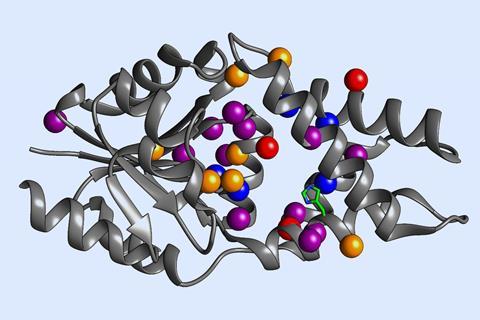
An engineered enzyme has been created to carry out a notoriously slow organic reaction, and it far exceeds the performance of many conventional catalysts.
The development applies biochemical techniques to the Morita–Baylis–Hillman (MBH) reaction, which is used to form a carbon–carbon bond between an alkene and carbon electrophile, such as an aldehyde, thereby creating products that can be used in further syntheses.
But although it’s extremely useful in organic synthesis, the MBH reaction is very slow with existing catalysts – usually small-molecule nucleophiles such as imidazole – which often take days and sometimes weeks to produce a useful amount of a product. In comparison, the newly engineered enzyme – designated BH32.14 – is orders of magnitudes faster and is also enantioselective.
Results show that even very low concentrations of the BH32.14 enzyme added to the MBH reaction greatly outperform much larger loadings of existing catalysts. By contrast the reaction takes just a few hours rather than several days, says Anthony Green, a professor in organic and biological chemistry at the University of Manchester and the senior author of the new study.
‘The typical catalysts you use for this reaction are small nucleophiles,’ Green says. ‘The beauty of biology is that if you can engineer an enzyme or design a protein to do this reaction, the rate acceleration is significant compared to anything that’s been achieved with small-molecule chemistry.’
The new enzyme was created from a computationally-designed protein, designated BH32, that was developed a few years ago by a team led by biochemist David Baker at the University of Washington in Seattle. Baker is a co-author on the latest study.
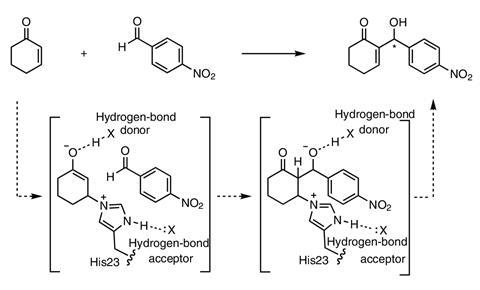
Green explains that Baker’s team were able to successfully design enzymes for the MBH reaction, but the obtained enzymes acted only weakly. ‘They were catalytically competent, but weren’t viable biocatalysts,’ Green says.
To create the BH32.14 enzyme, the researchers led by Green applied ‘evolutionary optimisation’ to the enzymes developed by Baker’s team – a process of applying protein engineering technologies, automation, and high-throughput screening to iteratively improve the enzyme, which took almost two years to complete. Now that the enzyme is fully characterised, it can quickly be made in useful amounts by creating a DNA construct for it and expressing it in bacteria.
BH32.14 is one of the most complex designed enzymes applied to organic chemistry to date. The development shows the promise of engineering enzymes and other proteins as catalysts in demanding multistep processes like the MBH reaction. ‘New catalytic mechanisms can be engineered into proteins to accelerate more challenging chemical transformations,’ the researchers write.
Tim Bugg, a professor of biological chemistry at the University of Warwick who was not involved in the study, says the results verify that BH32.14 performed favourably compared with existing small-molecule catalysts. ‘The resulting engineered enzymes can catalyse the MBH reaction using a range of substrates, in good yield and high enantiomeric excess,’ he says.
The approach taken by Green and his colleagues shows the potential of enzyme engineering for the discovery of new catalysts not found in nature, an approach that ‘could be used for green chemistry approaches to synthesis’, he says.
Correction: On 20 January 2022 the headline and opening line of the article were updated to better reflect the engineered enzyme’s known performance against other catalysts. A passage on the complexity of the enzyme and its production was also clarified. A position attributed to Professor Green was also edited.
References
R Crawshaw et al, Nat. Chem., 2021, 10.1038/s41557-021-00833-9

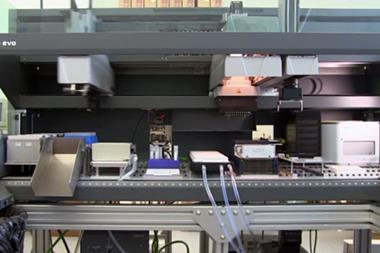
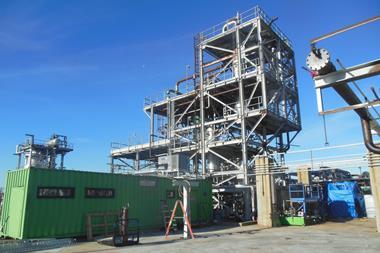
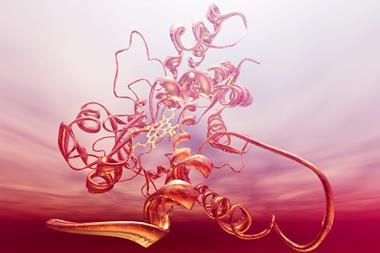
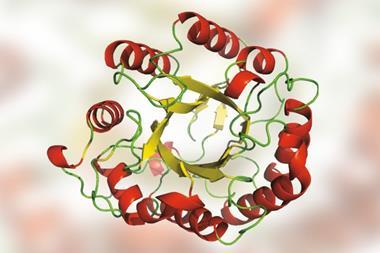
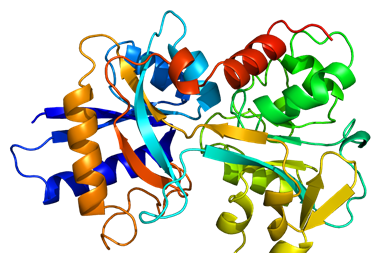






No comments yet